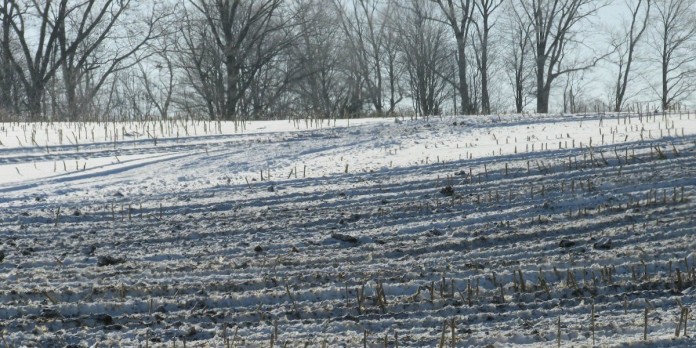When we reflect on 2018, it will be a year of frustration for many of us. Most of Ohio had year-long excess rainfall that made for miserable planting, haymaking and harvest.
Ohio is anywhere from 2-20 inches above normal for rainfall, depending on your location. Our area of Coshocton County has seen 125 percent of the normal rainfall, according to the National Weather Service. We’ve recorded 48.68 inches of rainfall in 2018, with 38 inches being our average.
This makes everyone’s job harder to accomplish, especially those with livestock who have manure to manage.
Recently during a SWCD board meeting, the technicians reported on training they attended and then driving by a field where the producer was spreading manure on a field right beside the stream.
We have good conversations at board meetings and are fortunate to have board members who are interested in our work and projects. The Western Lake Erie basin rules have also been a dominant topic of conversation recently. This prompted several good questions.
Did the producer realize he was too close to the stream? What do we suggest for those that have full manure pits and need to spread before spring?
Stream setbacks
Let’s talk about stream setbacks. We follow the USDA’s Natural Resources Conservation Service (NRCS) 590 Standard that defines setbacks from streams, ditches, or surface inlets as:
Surface application: 35-foot vegetative barrier (grass, trees/shrubs, legumes); or 100-foot setback in non-vegetative setback, OR 35-foot in non-vegetative setback if manure application area has at least 50 percent vegetation/residue cover at the time of application (cover crop).
If you surface apply manure and incorporate it within 24 hours OR use direct injection, no set-backs are necessary.
Winter application: Frozen or snow-covered soils: a 200-foot setback is required regardless of the barrier to the stream or ditch.
Again with incorporation or direct injection, no set-back is necessary.
We are not promoting spreading manure on frozen or snow-covered soils and would try to help any producer plan applications so that spreading during the winter would be avoided.
However, that is unavoidable for many farmers this year. This harvest season has been challenging and most producers have not had the opportunity to empty their manure pits because they are still in the field trying to get crops off.
A 35-foot buffer between any farm field and all our streams and ditches would go a long way in solving many of our water quality issues today.
Plants along the edges of streams reduce the risk of banks collapsing and dumping tons of soil into the channel. Strong plant roots filter dissolved nitrogen as water seeps downhill toward the stream.
Thick plant growth also slows the movement of excess runoff, allowing suspended soil particles to be deposited in the buffer instead of the bottom of the stream.
Permanent buffers can be planted with native or non-native grasses, trees, shrubs, or hay which can be used for livestock.
Most of us don’t like the words “prohibit or require” when it comes to managing our property. But if we don’t start taking some of these steps voluntarily, “big brother” is going to step in and tell us where, how, and when nutrients can be applied to our fields. And this could include both fertilizer and manure.
Get some help
Do you have a Nutrient Management Plan or Comprehensive Nutrient Management Plan for your farm? This is a great first step that will help you become familiar with where and how much manure or fertilizer you should be applying.
Contact your local soil and water conservation district for ideas and assistance to keep your valuable nutrients in place. Our offices can write the plans for you or help you find someone qualified to do so.
Our offices understand the valuable work you do and want to safeguard your ability to make your own decisions, but we must also protect the waterways of our communities. Working together is the only way to accomplish this goal.














These rules have more bends in them than the Ohio river !!